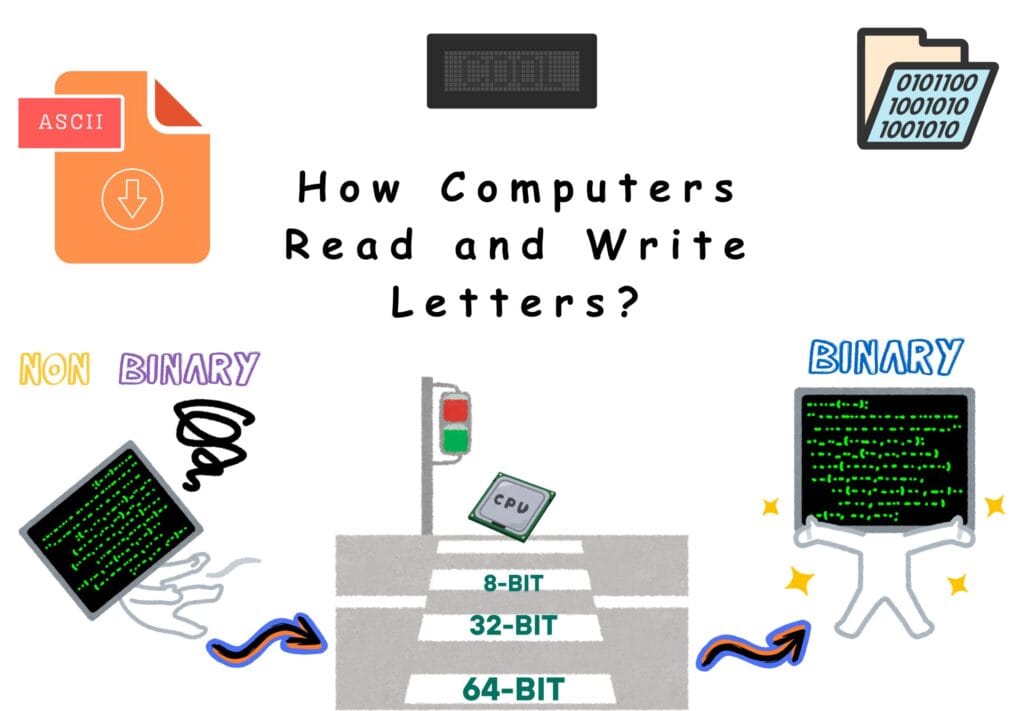Learn how computers read and write letters using binary and ASCII. A beginner-friendly guide to bits, bytes, and digital language.
Table of Contents
Introduction
Imagine a robot in your house. It has no idea what a letter is. It does not know “A,” “B,” or “C.” All it knows is how to turn lights ON and OFF. That is it. Nothing more.
Even if you go to any AI model and ask:
“Can you see letters, numbers, or symbols?”
OR
“Can you see an image?”
It would respond as follows:
“I process them as data, not visually like humans.”
OR
“I process image data, but don’t “see” it like humans do.”
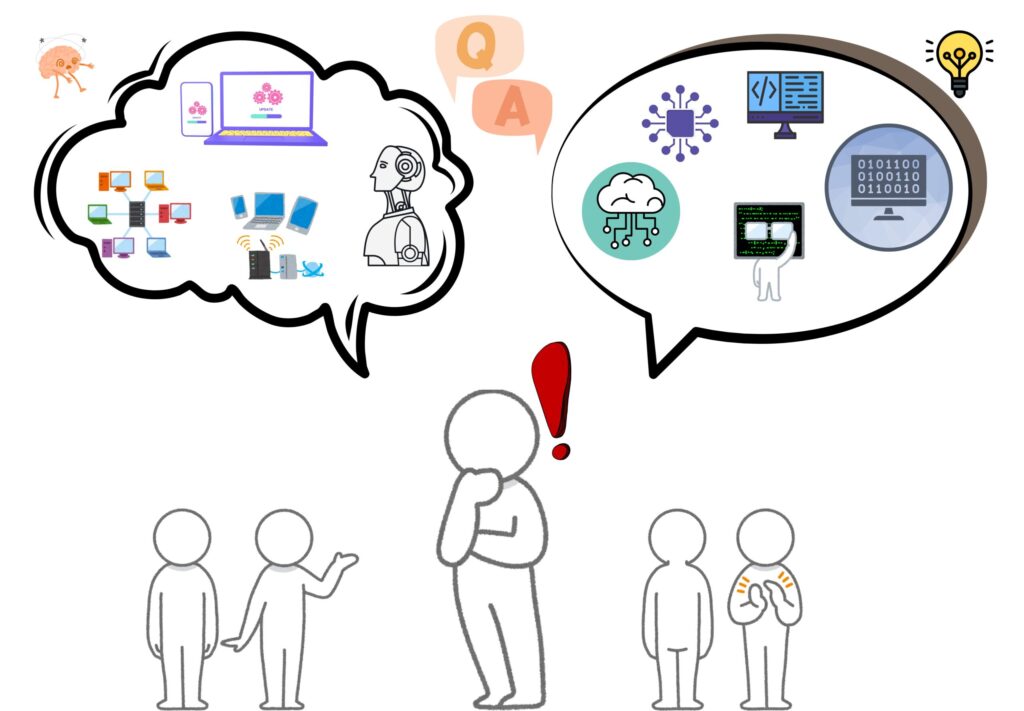
So, how do we make this robot read a message? How do we teach it to understand letters and words? Let us find out. It is easier than you think!
Language of a Computer – Binary
A computer does not speak English or any language in particular. But it can read switches — like light switches. Each switch can be:
- ON (we call it 1)
- OFF (we call it 0)
That is all the computer understands: 1s and 0s — called binary digits (also known as binary or bits). If we want to understand letters, we must use 1s and 0s to build letters.
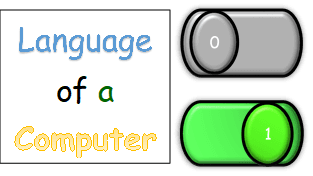
Building Letters with 1s and 0s
Long ago, smart people made a list — a secret codebook — to help the robot. Here is what they did:
1. They decided what they wanted to write.
- Letters like A, B, C
- Numbers like 1, 2, 3
- Symbols like space, !, or @
2. They gave each one a number using normal counting (called decimal).
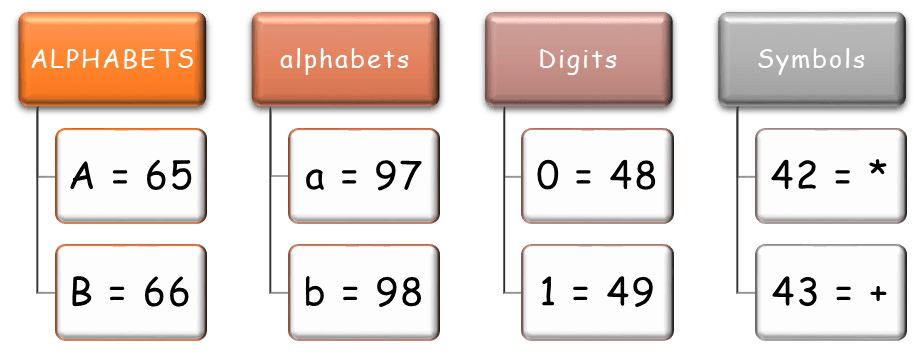
3. They changed those numbers into ONs and OFFs (binary).
- A = 65
 1000001 (in binary)
1000001 (in binary) - B = 66
 1000010
1000010 - Space = 32
 0100000
0100000 - 1 = 49
 0110001
0110001
Note that these are the exact binary patterns that travel through the motherboard as little voltage signals — pulses of electricity. Inside the CPU, millions (even billions!) of tiny transistors detect these pulses. They switch on and off in patterns to process, store, or display that data.
4. They told the computer to use 7 switches to match these ON/OFF patterns. So, the letter A is:
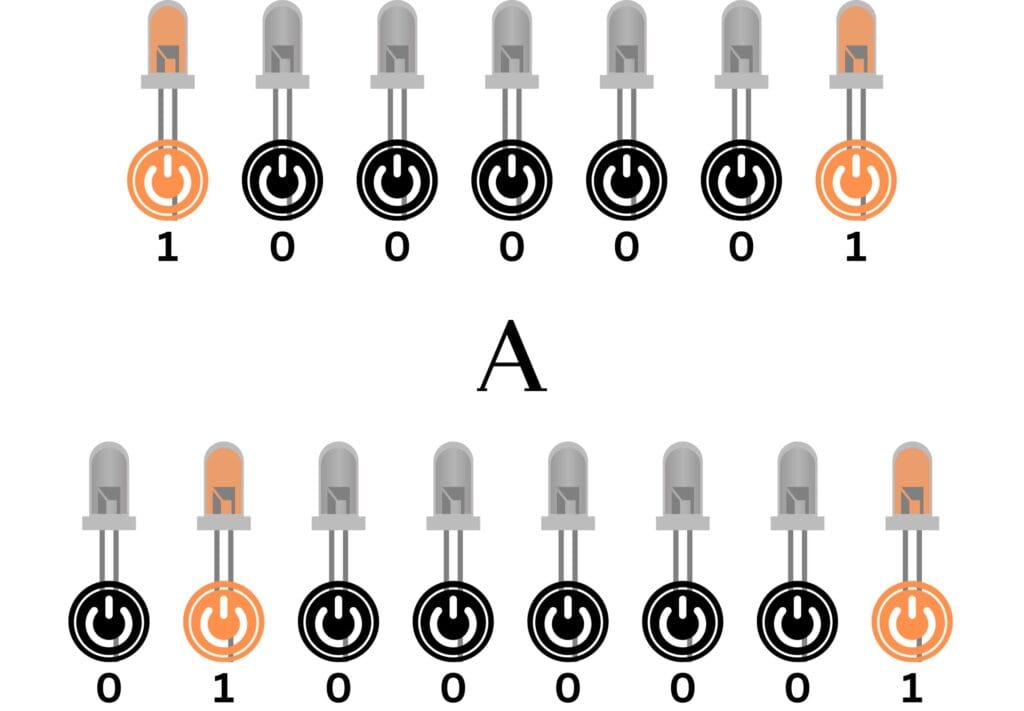
Often, they added one blank switch in front — making it 8 switches.
Number of Switches in Action
Originally, 7 switches gave 128 patterns (27) — enough for the Basic English letters, numbers, and symbols.
You might ask, “Why use 8 switches when 7 are enough?” For reference, look at the illustration above.
Well! Using 8 switches gave us two primary benefits:
- Add more letters like ñ, é, ü (used in other languages)
- Check for mistakes to avoid errors
So, we keep 7 switches for the letter, and one extra “blank” switch in front.
The ASCII Codebook
The special list — or codebook — of binary is called ASCII (say it like: ask-ee). It tells the computer:
“When you see this pattern — show this letter!”
For example:
- 01000001 means A
- 01000010 means B
- 00110001 means 1
- 00100000 means (space)
So, a computer does not understand the letter “A” the way we humans do. But when it sees that exact pattern of binary (0s and 1s), it says:
“My codebook says this means A — so I will show A!”
It simply follows the instructions we have given.
Of course, modern computers are far more advanced than this. Many can now learn patterns, recognise speech, and even generate art or write code. They have developed what we call artificial intelligence (or AI). An AI-powered computer can make decisions and solve problems on its own.
However, deep down the foundation is still the same. Hence:
No switches? No computers.
No codebook? No language.
Everything starts with tiny ON/OFF signals.
ASCII Table
The full table with all 128 codes (from 0 to 127) is available as a downloadable PDF. Feel free to explore it and see how each symbol is made from just 1s and 0s!
How Big is a Bit?
Now you might wonder:
“Can a computer process any amount of data at once?”
The short answer is: No!
The ability of a computer to handle data depends on its bit width (size). Just like the capacity of a road depends on how many lanes it has, the capacity of a computer is determined by its bit size.
Let us imagine a digital superhighway and a truck (data) passing through it. Here:
- 1 bit = one-eighth of a vehicle (like a single switch)
- 8 bits = a complete vehicle (also called 1 byte in computer language)
- The CPU = a tollbooth on the digital highway
- Bit size = how many trucks (or lanes) the tollbooth can handle at once
So, 8-bit and 32-bit CPUs act like tollbooths that allow 1 vehicle (1 byte) and 4 vehicles (4 bytes) through at a time, respectively (as shown in the illustrations below).

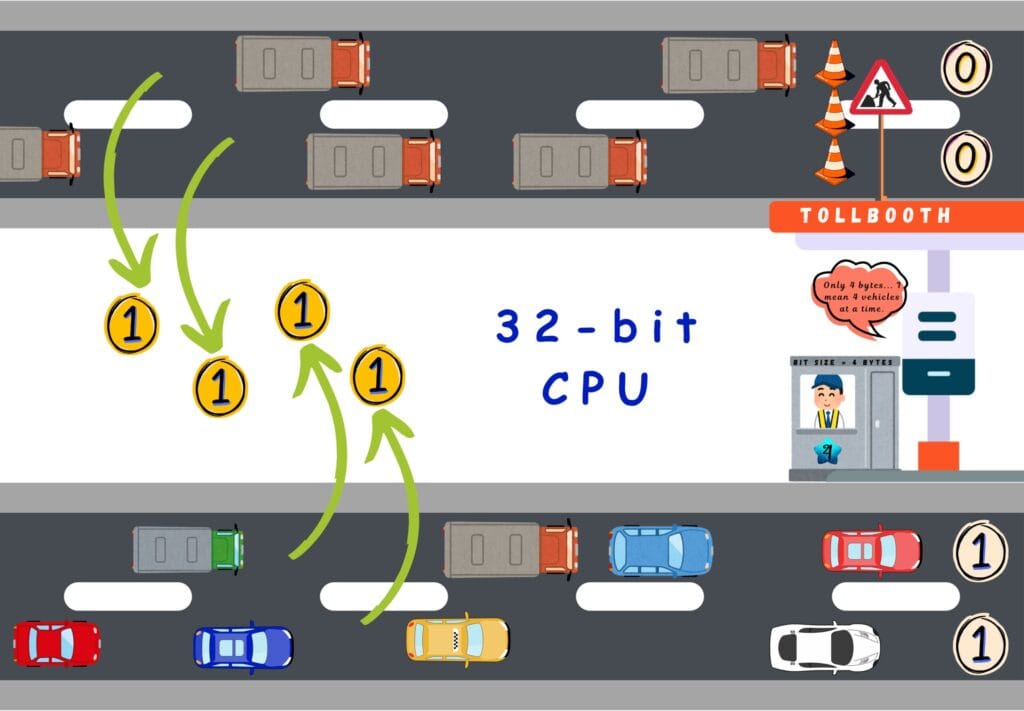
Similarly, a 64-bit CPU, with an even larger tollbooth, can let 8 vehicles (8 bytes) pass all at once.
This analogy makes one thing clear:
More Lanes = More Data At Once = Faster and More Powerful Computers.
That is why modern smartphones, laptops, and Windows systems use 64-bit CPUs. They are designed to carry more data per cycle and perform more and faster work.
Conclusion
Computers and robots only understand ON (1) and OFF (0). They do not understand human language. However, humans made a codebook called ASCII to give meaning to these binary patterns (0s and 1s).
We told computers: “When you see this pattern, show this letter.” Computers follow these rules every time — even today!
You do not need to know about wires, memory, or chips to get this. Just think of a computer like a child who only knows 1s and 0s.
Frequently Asked Questions (FAQs)
What does it mean that computers understand only ON and OFF?
Computers use binary — just 1s (ON) and 0s (OFF) — to process all data, including letters and symbols.
How Computers Read and Write Letters?
Computers use binary (1s and 0s) to represent letters. Each letter has a unique code from the ASCII system.
For example, A = 01000001.
The computer reads these codes and shows the matching letters.
What is ASCII in computer science?
It is a code that tells computers which binary pattern matches which letter, number, or symbol (e.g., A = 01000001).
Do we use 7 or 8 bits for letters?
7 bits are enough for basic characters, but 8 bits allow for extra symbols and error checking. That’s why 1 character = 1 byte (8 bits).
What is the difference between a bit and a byte?
A bit is a single 1 or 0. A byte is 8 bits, enough to represent one character like “A”.
How does bit size affect computer speed?
More bits (like 64-bit vs. 32-bit) mean more data can be handled at once, making the computer faster and more powerful.

